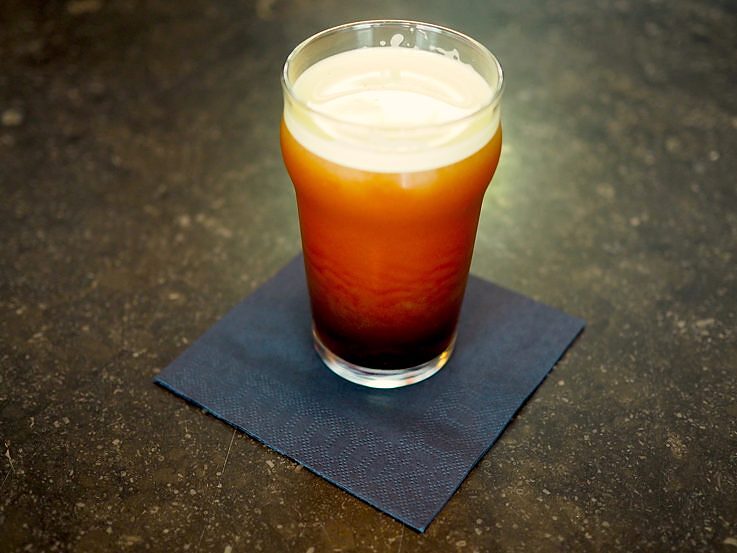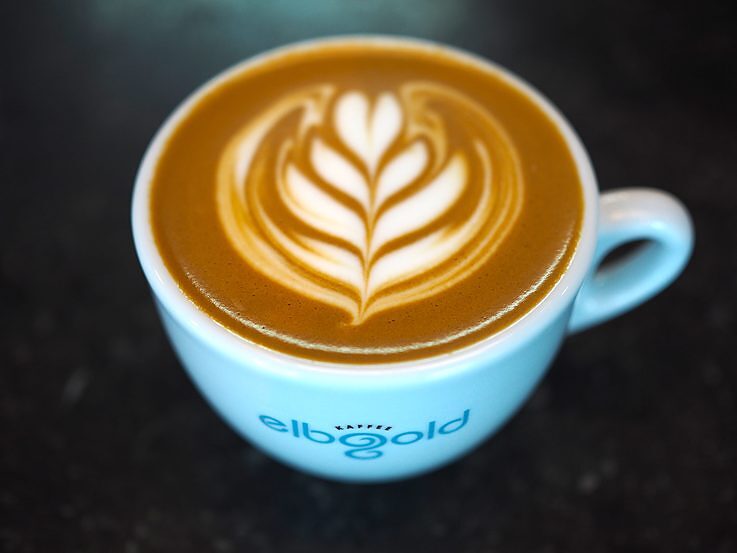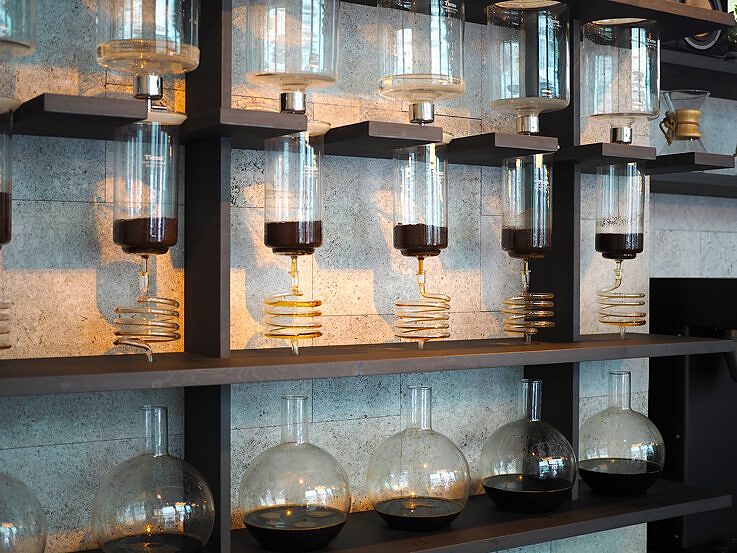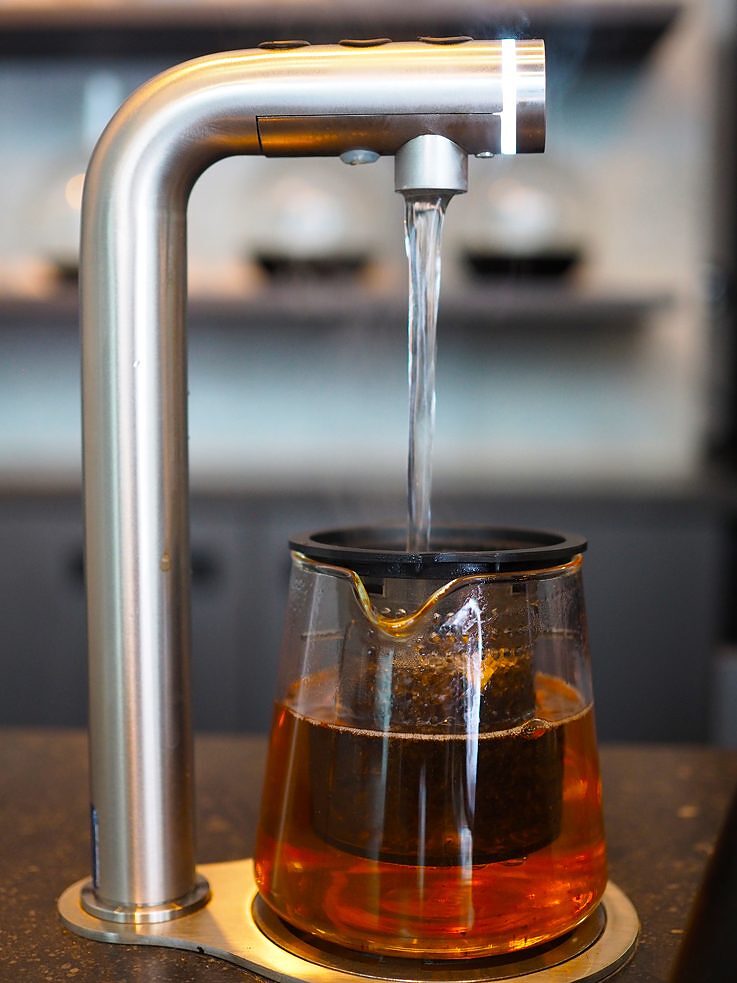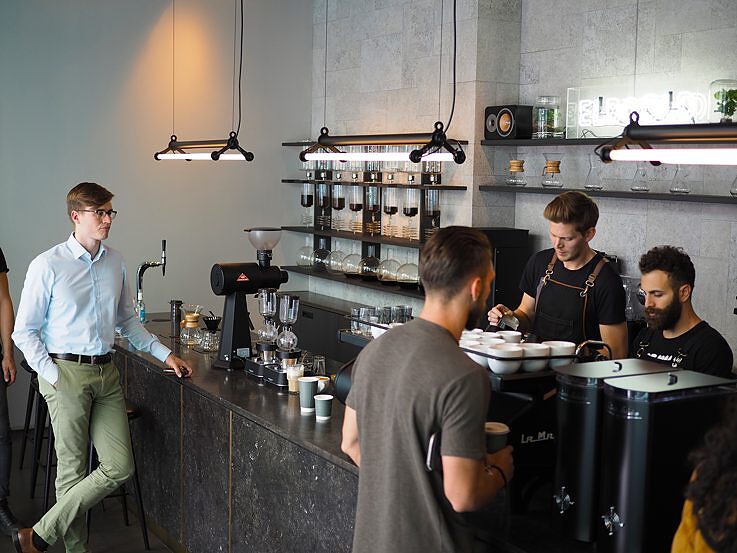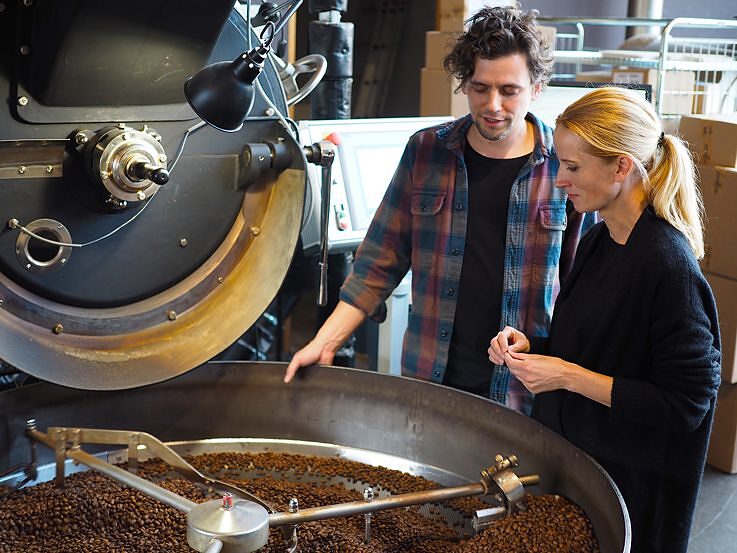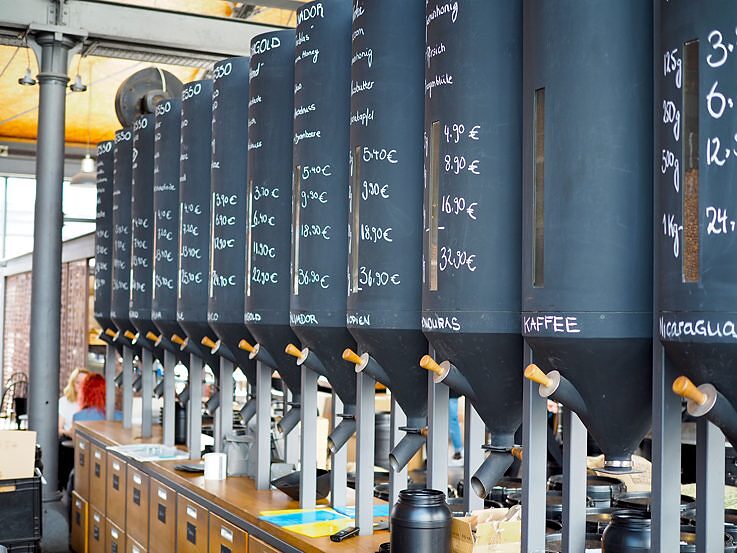Culinary Harbour Cities
“Putting people first.”
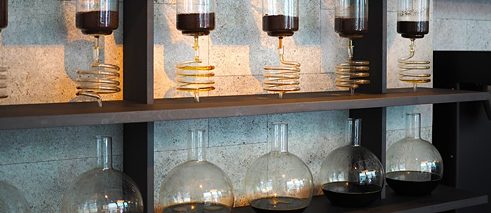
Former PR consultant Annika Taschinski and her partner Thomas Kliefoth are regarded as the forerunners of a contemporary coffee culture in Hamburg, Europe’s second-largest coffee cargo handling port. In 2004 they set up their “elbgold” (= Elbe gold) roasting business, now with five branches, serving and selling only their own coffee. Their point of difference is that they source their coffee beans directly from the farmers who grow them, with no involvement of middlemen or intermediaries.
How difficult was it to establish a more sophisticated coffee culture in Hamburg back in those early days?
At the start, it was pretty hard going. When we had the original idea back in 1995, our bank’s response was: “What for? You can get Tschibo coffee in any supermarket or corner store, can’t you?” Those “industrial” coffee brands were the “first wave”. Then chains like Starbucks came along, serving latte macchiato with all sorts of syrups and fancy alternatives. That was the “second wave”. And it was that trend that finally opened the bank’s doors to us, to get a loan to start things off. So now we are often described as the “third wave” of coffee culture, focused on speciality coffees from select origins, with very high quality standards.
You could take the easy way out and just buy your beans from a wholesaler. Why do you prefer to buy direct from farmers on the spot?
We are determined to put people first – all the people we deal with. That includes our staff, our customers, and above all the farmers who grow our coffee beans. What that means in practice is that we buy high-quality beans, which we then roast and sell. It means that we pay our farmers a sizeable premium over the world market price. The market price is currently around one US dollar per pound (= 0.454 kg – editor), which is nowhere enough to live on. But we pay anything from 3 to 50 US dollars per pound for coffee beans at point of origin. I also want our customers to be aware that quality coffee purchased at a fair price is inevitably going to cost them a little more.
So why doesn’t your coffee have a sustainability mark?
We take a rather different approach. We visit our growers on the spot and talk to them, because we want to build a personal relationship with them. And it’s really good to leave your “prosperity bubble” once in a while. The coffee beans are often grown on small family farms, frequently far from the nearest town, and not at all easy to get to. Sometimes the family lives in a simple shack, with no permanent floor, and with a long-drop as the only toilet.
These farmers produce only minute quantities, sometimes only 10 sacks of 60 to 69 kg a year. Compare that with the 275 to 350 sacks that are crammed into a single shipping container! By working directly with the farmers, we can show them how to grow even better beans, and get higher prices for their product.
We see this as a better, more credible and hands-on approach than some kind of sustainability mark. A mark doesn’t actually say anything about the quality of the coffee, and if the quality’s not right, then that’s bad for everyone, including the farmers. So we see direct sourcing as the best form of sustainability.
How do you tell your story to your customers?
We don’t actually like to talk too much about ourselves. Although our latest branch is a bit of an exception in that regard, because it’s not your ordinary cafe, but a “laboratory”. That means we can make our coffee in nine different ways and try things out (including plunger, syphon, aeropress, cold drip, filter machine, nitro – editor). It also means we can have a conversation with our customers, and tell them about our coffee and the growers who produce it.
Coffee generates a lot of waste, especially coffee to go. What are you doing in this area?
Well, for a start, our coffee bags are biodegradable and compostable. And our take-away mugs, straws and all sorts of other packaging materials are made of maize starch, and therefore compostable. To reduce waste levels still further, we offer discounts for customers who bring in their own jars, tupperware boxes, etc. when buying coffee beans, or their own reusable coffee mugs. We also have a packaging return system for our roasted coffee beans. In Hamburg we supply our product to restaurants, cafes, offices and agencies in returnable barrels, and soon we will also have an electric delivery van.
Why is organic certified coffee relatively rare?
At the moment there are only a few countries capable of producing organic coffee crops that are both economically viable and of high quality. That’s partly because of the worldwide problem of coffee leaf rust (a fungal disease – editor), and partly because the price premium for organic beans is out of all proportion to the sacrifice in terms of quantity. For example, a coffee grower will generally be paid 0.3 USD/lb more for organic coffee, but harvests 30% to 50% less crop. A grower who is getting high prices because of superior quality has nothing to gain from organic certification. That’s why in Kenya, for example, where growers are currently getting very high prices, there is virtually no organic coffee.
